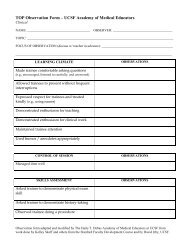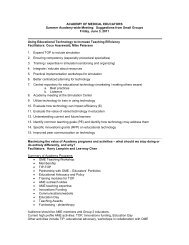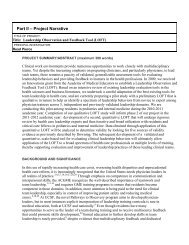The Healthy Management of Reality - Stanford University
The Healthy Management of Reality - Stanford University
The Healthy Management of Reality - Stanford University
Create successful ePaper yourself
Turn your PDF publications into a flip-book with our unique Google optimized e-Paper software.
problems. Prevention advocates argue that it is vitally important to direct more <strong>of</strong>our efforts at providing our communities with education and other services thatcould avert the portion <strong>of</strong> these problems that are preventable.Since 1977, as a pr<strong>of</strong>essor at the <strong>University</strong> <strong>of</strong> California, San Francisco, Ihave worked at San Francisco General Hospital, one <strong>of</strong> our teaching hospitals, andthe city’s public hospital. For twenty-eight years, I have seen at close range themany ways that people with very few economic resources can live their lives.I have seen the admirable ways in which so many people deal successfullywith adversity, as well as the disastrous results <strong>of</strong> personal choices. In my workwith patients, I have become ever more intrigued about how the way we think andthe things we do affect our feelings, our daily lives, and our relations with others;in short, how our day-to-day actions mold our personal reality.I worked with hospitalized psychiatric patients for six years and saw at closehand the major disorders that I wanted to prevent. I learned that many <strong>of</strong> thesedisorders have strong biological components, and gained great respect for thepharmacological and other medical interventions that are so important to helpindividuals resume their lives. But even here, choices made (including continuingwith their treatment after leaving the hospital) seemed to affect the kind <strong>of</strong> life eachpatient and their loved ones would live. I then found that if I wanted to intervenebefore individuals developed psychiatric problems, I needed to work with primarycare medical patients.Depression is one <strong>of</strong> the most common problems seen in primary caremedical settings. It turns out that most people suffering from depression do notseek mental health services. <strong>The</strong>y go to primary care physicians. So, in the early'80s, I developed the Depression Prevention Course, which focused on reducingdepressive symptoms in people who had not yet developed a clinical, that is, aHMOR.July2005.Muñoz.doc 6
















